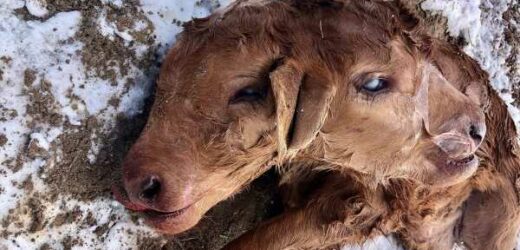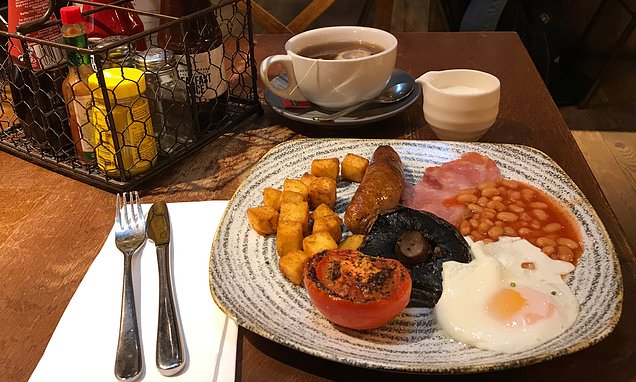Two-headed mutant cow born on US farm
A two-headed mutant calf has been born on a ranch in the US in a one-in-2,500 mutation that the farmer described as “shocking”. Leslie Hunewill, 38, was watching over her family’s cows when she noticed that one of the heifers was about to deliver its first calf. However, it soon became clear that the cow was struggling — with the rare mutation to blame.
Scientists refer to the condition of having more than one head as polycephaly.
Polycephaly has been seen in various animals — including cats, cows, goats, pigs, sheep, mice, birds and turtles. The condition has also been seen among humans.
Initially, however, Ms Hunewill said it was not clear that the calf had an extra head.
She said: “Examining her, a head and the front legs were in the birth canal and the calf did not feel too large for the heifer to birth on her own.
“So — it was puzzling why she was having difficulty.
“A lump or swelling was felt behind the head on one side, but when you’re not expecting two heads, it’s not something you would think would be there.”


Ms Hunewill continued: “As it was dark, windy, and snowy, it wasn’t immediately apparent that the calf had two heads, though it was evident that something was different.
“The calf’s body was small — what we would expect with the bull this heifer was bred with — but the head seemed unusually large.
“It’s hard to comprehend what you’re seeing when you’re not expecting what’s in front of you! Even then, it took a minute to process — were those… two heads?
“It was a bit shocking when it finally sank in that there was a two-headed calf laying out there. I kept watching the short video clip of it over and over.”


An experienced cattle farmer, Ms Hunewill helps to run her family’s ranches in both Nevada and neighbouring California. However, even for her, this cow’s birth was a first-time experience.
She explained: “We have never had a birth like this, that we know of. It happens when an embryo tries to split into two separate embryos — which would create identical twins — but the split never completed.
“It isn’t something that is genetic, so I understand it’s a rare occurrence — from what I can find, conjoined twins occur in roughly 0.039 percent of bovine births.
“My agriculture science teacher in high school had a stuffed and mounted two-headed calf in the classroom — it was very old and moth-eaten at that point, but it was interesting to see.
The farmer added: “I never expected to see one in my lifetime.”
DON’T MISS:
Ukraine war pushing dangerous diseases to ‘alarming levels’ in Kharkiv[ANALYSIS]
Shape-shifting antibiotics could help fight resistant infection[INSIGHT]
Archaeologists discovered severed hands kept as trophies in Egypt[REPORT]

According to Ms Hunewill, the calf’s delivery proved to be somewhat arduous. At first, so-called obstetrical chains were attached to the calf’s front legs, and it was pulled by hand in time with each contraction to try to help the birth.
However, this proved to be insufficient, and the farmers had to bring in a tool called a calving jack to enable a stronger pull.
Ms Hunewill said: “It took two men to get the calf out.”
Tragically, the calf did not survive the birth — but the farmers found a way to help the mother cope with the pain of the loss.
Ms Hunewill explained: “We had an orphaned calf that was being fed on a bottle, so we grafted the orphan on to the mother.
“They were both very happy to have one another. She is a very attentive mother.”
Source: Read Full Article


